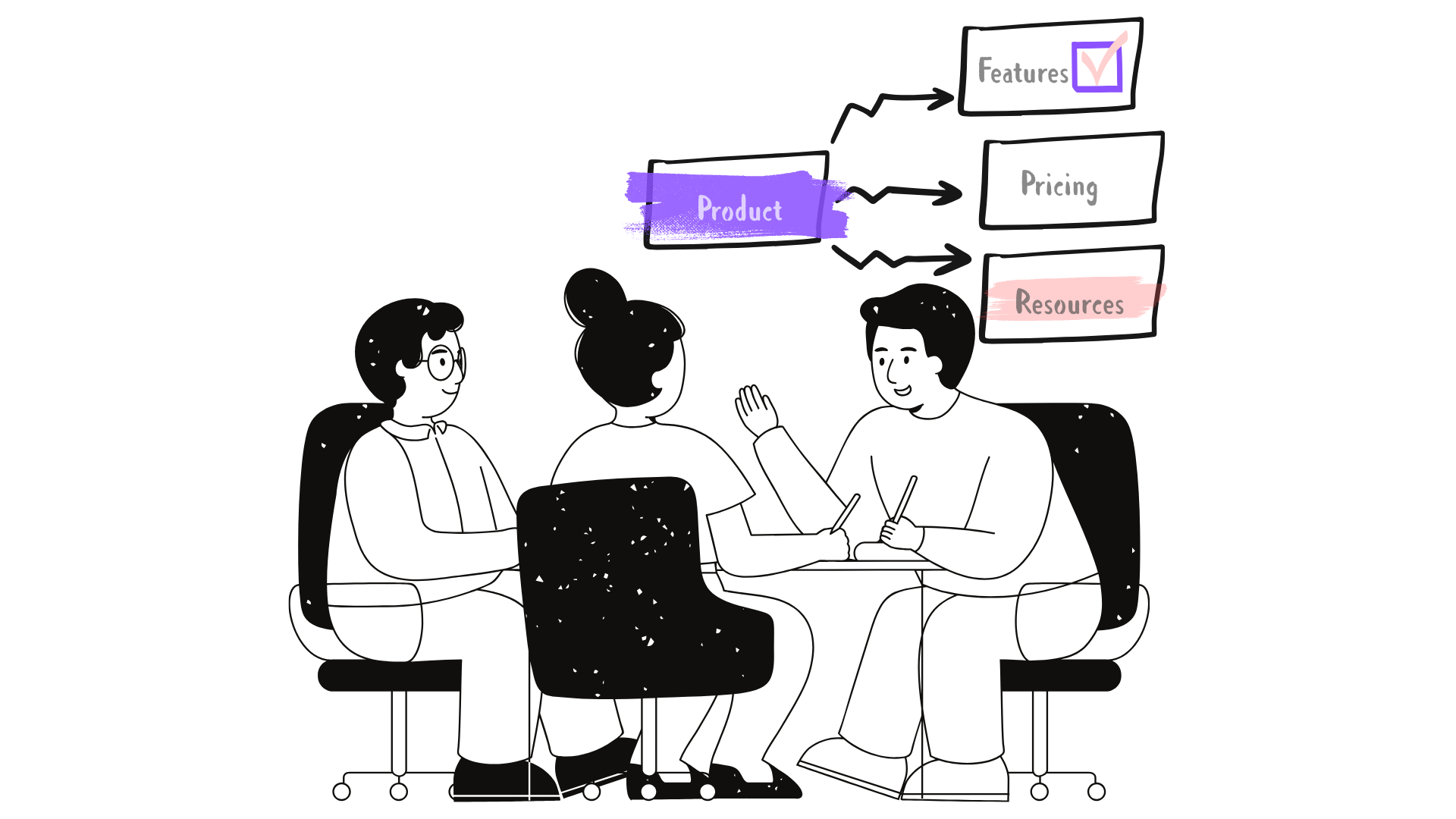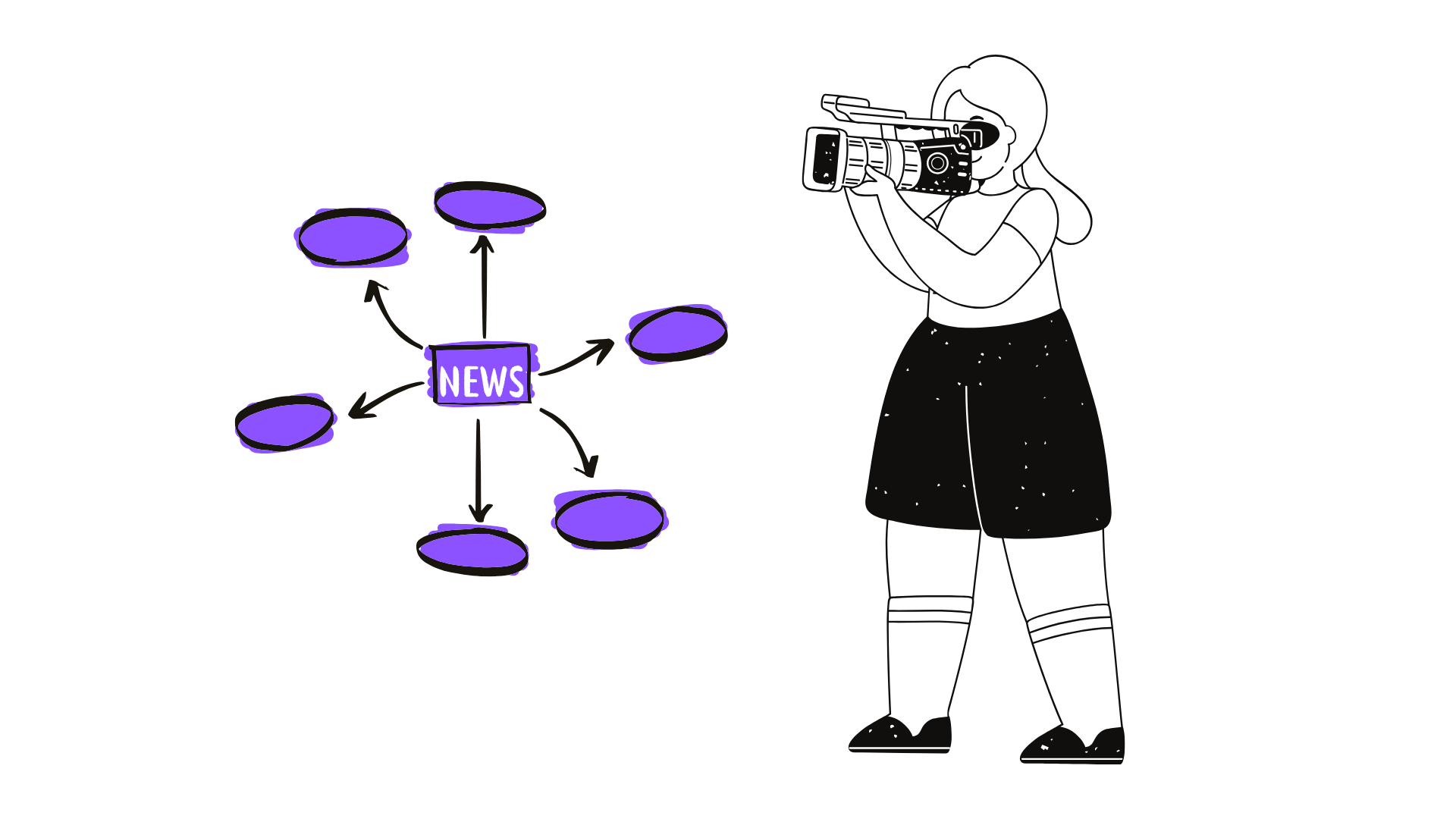Knowledge Templates
Explore curated templates with interactive mindmaps.
Survival Specialists: How Animals Master Their Environments
This article explores the remarkable physical and behavioral adaptations that enable animals to thrive in the world's most extreme habitats. From the scorching heat of deserts to the freezing Arctic, the dense rainforests, and the crushing depths of the ocean, each environment presents unique challenges. Discover how camouflage, temperature regulation, specialized feeding mechanisms, and unique reproductive strategies are key to survival. Learn about the incredible ways life has evolved to not just exist, but to flourish in every corner of our planet.
Animal Body Systems: A Comparative Guide
This article explores the fascinating world of animal anatomy and physiology by comparing key biological systems across different species. Discover how the mammal digestive system processes food, how the bird respiratory system enables efficient flight, how the fish circulatory system adapts to aquatic life, and how the insect exoskeleton structure provides both protection and support. Through these comparative examples, we gain insight into the remarkable evolutionary adaptations that allow animals to thrive in diverse environments.
Animal Classification: A Guide to Life's Diversity
This article explores the fascinating world of animal classification, explaining how scientists organize the animal kingdom into logical groups. Learn about the fundamental differences between vertebrates and invertebrates, discover the five main groups of vertebrates—mammals, birds, reptiles, amphibians, and fish—and understand how a simple animal taxonomy chart helps reveal the evolutionary relationships between species. This guide provides a clear and structured introduction to biological diversity, making it an excellent resource for students and anyone curious about the natural world.
The Secret Language of Animals
This article explores the fascinating and diverse ways animals communicate, moving far beyond simple sounds. It delves into the sophisticated vocalizations of dolphins and primates, the intricate visual dance of honeybees, and the subtle body language used across species. By examining methods like chemical cues and tactile signals, we uncover how animals convey critical information about food, danger, mating, and social hierarchies, revealing a complex world of interaction hidden in plain sight.
The Unfolding Story of Animal Evolution
This article explores the fascinating journey of animal evolution, detailing how species have developed and diversified over geological time. It explains core mechanisms like natural selection and speciation, using compelling examples to illustrate evolutionary adaptations. The piece also highlights the critical role of the fossil record in providing tangible evidence for the branching lineages of life, tracing the path from common ancestors to the vast biodiversity we see today.
From Birth to Reproduction: Understanding Animal Life Cycles
This article explores the fascinating developmental journeys animals undertake throughout their lives. It examines the distinct life cycle patterns found across major animal groups, including the direct development of mammals, the complete and incomplete metamorphosis of insects, and the dramatic transformations of amphibians. Through specific examples like butterflies and frogs, readers will understand how different species progress from embryonic stages to reproductive maturity, adapting to their environments through varied growth strategies.
The Great Migrations: Nature's Epic Journeys
This article explores the fascinating phenomenon of animal migration, the regular long-distance movements between breeding and feeding grounds driven by seasonal changes and resource availability. Discover the incredible journeys of birds, whales, and monarch butterflies as they navigate thousands of miles using sophisticated biological mechanisms. Learn how scientists track these migrations and why understanding these patterns is crucial for conservation efforts worldwide.
The Essential Guide to Proper Animal Care
This comprehensive guide explores the fundamental pillars of proper animal care across different species. Learn about the critical components of animal welfare, including species-specific nutrition, appropriate housing solutions, preventive healthcare, behavioral socialization, and essential environmental enrichment. Whether you care for domestic pets, farm animals, or exotic species, this article provides valuable insights into creating optimal living conditions that respect each animal's natural behaviors and requirements for a healthy, fulfilling life.
Saving Our Endangered Wildlife: A Race Against Time
This article explores the critical state of global biodiversity, highlighting the primary drivers pushing countless species toward extinction. It delves into the sobering reality of the endangered species list for 2025, showcasing examples of critically endangered animals. The piece also outlines the vital conservation efforts underway, from on-the-ground protection to international agreements, emphasizing the collective action required for threatened species protection and wildlife extinction prevention.
The Secret Lives of Animals: Unlocking Behavior Patterns
This article explores the fascinating world of animal behavior, from the instinctive drives of feeding and mating to complex learned actions. It delves into the intricate social hierarchies that govern group life, the sophisticated hunting strategies employed by predators, the diverse and often tender approaches to parenting, and the ingenious methods animals use to mark and defend their territories. By examining these behaviors, shaped by millions of years of evolution, we gain a deeper appreciation for the intelligence and adaptability of the animal kingdom.
What is Product Strategy? Definition, Benefits & Framework
Learn what product strategy is, why it's crucial for product success, and how to build an effective strategy with practical frameworks and examples.
How to Write a Product Requirement Document (PRD)
Learn how to create effective product requirement documents that align teams, define scope, and drive successful product development with practical frameworks.
What is a Minimum Viable Product (MVP)? Definition & Examples
Learn what a Minimum Viable Product (MVP) is, why it's crucial for product development, and how to build one to validate your business hypothesis efficiently.
How to Define Product-Market Fit: A Practical Guide
Learn how to define and measure product-market fit with actionable frameworks and metrics. Discover why PMF is crucial for sustainable business growth.
Why User Research Matters in Product Design
Discover how user research transforms product design by aligning solutions with real user needs, reducing risks, and driving business success through evidence-based decisions.
What is the Kano Model? A Guide to Feature Prioritization
Learn how the Kano Model helps product teams prioritize features based on customer satisfaction. Discover the five feature categories and practical implementation steps.
How to Use RICE Scoring for Feature Prioritization
Learn how to use the RICE framework (Reach, Impact, Confidence, Effort) to prioritize product features with data-driven decisions and maximize ROI.
What Is the MoSCoW Method? A Guide to Prioritization
Learn how the MoSCoW method helps teams prioritize requirements and tasks using four simple categories. Perfect for project managers and product teams.
How to Build a Product Roadmap: A Step-by-Step Guide
Learn how to create an effective product roadmap that aligns teams, prioritizes features, and drives your product vision to success with this practical guide.
What is a Product Vision Statement? Definition and Examples
Learn what a product vision statement is, why it matters for product teams, and how to create an inspiring vision that aligns stakeholders and drives innovation.
How to Conduct User Interviews Effectively: A Practical Guide
Learn how to plan, conduct, and analyze user interviews to gain deep insights about your users' needs, experiences, and motivations.
What Is a Customer Journey Map? Definition and Benefits
Learn what a customer journey map is, why it's essential for businesses, and how to create one to improve customer experiences and drive growth.
How to Create Empathy Maps for Better UX Design
Learn how to create effective empathy maps to understand user needs, align your team, and design better user experiences with this practical guide.
What Is Design Thinking? A Human-Centered Problem-Solving Framework
Discover how design thinking's human-centered approach helps teams solve complex problems through empathy, iteration, and innovation.
How to Use Jobs-to-be-Done Framework for Product Success
Learn how to apply the Jobs-to-be-Done framework to understand customer needs, prioritize features, and build products people actually want to use.
What is OKR? A Complete Guide to Objectives and Key Results
Learn what OKRs are, how they work, and why this goal-setting framework helps teams align, focus, and measure progress toward ambitious objectives.
How to Write Effective OKRs for Product Teams
Learn how to create powerful OKRs that align product teams, drive measurable outcomes, and connect product strategy to business objectives.
What is Agile Product Management? A Practical Guide
Learn how agile product management combines flexibility with customer focus to deliver better products faster. Discover key principles and practices.
How to Plan Product Sprints: A Practical Guide for Teams
Learn how to plan effective product sprints using agile methodology. This guide covers sprint planning meetings, goal setting, and practical frameworks for product managers.
Agile vs Scrum: Key Differences and When to Use Each
Understand the fundamental differences between Agile methodology and Scrum framework. Learn when to use each approach for optimal project management results.
How to Conduct a Product Retrospective: A Practical Guide
Learn how to run effective product retrospectives with actionable frameworks, agenda templates, and best practices for continuous improvement.
What Is a Feature Backlog? A Guide for Product Teams
Learn what a feature backlog is, how it differs from product backlog, and best practices for managing and prioritizing features effectively.
How to Run a Product Discovery Workshop: A Step-by-Step Guide
Learn how to run effective product discovery workshops with practical frameworks, agenda templates, and facilitation tips for product managers and teams.
What is User Story Mapping? A Visual Guide for Product Teams
Learn how user story mapping helps product teams visualize customer journeys, prioritize features, and build better products through collaborative visual exercises.
How to Write Effective User Stories: A Practical Guide
Learn how to write clear, actionable user stories with proper structure, acceptance criteria, and real examples for agile product development success.
What Does a Product Manager Do? Role and Responsibilities
Explore the multifaceted role of product managers, their core responsibilities, essential skills, and how they drive product success through strategic leadership.
How to Conduct Competitive Analysis: A Step-by-Step Guide
Learn how to conduct competitive analysis with our 5-step framework. Identify competitors, analyze their strategies, and gain market advantage for your business.
What Is the Product Lifecycle? Stages and Strategies
Learn about the product lifecycle stages from development to decline, with practical strategies for product managers to optimize each phase effectively.
How to Identify Key Product Metrics (KPIs) for Success
Learn how to identify the right product KPIs that measure user value, business outcomes, and product success with practical frameworks and examples.
What Is a North Star Metric? Definition and Examples
Learn what a North Star Metric is, why it matters for product teams, and how to choose the right one for your business with real-world examples.
How to Build a Go-to-Market Strategy: A Step-by-Step Guide
Learn how to build an effective go-to-market strategy with our comprehensive framework. Identify target audiences, define value propositions, and launch successfully.
What is Product Differentiation? Definition and Examples
Learn what product differentiation is, why it matters for business growth, and how to implement effective differentiation strategies with practical examples.
How to Manage Stakeholder Expectations Effectively
Learn practical strategies for managing stakeholder expectations through identification, communication, and continuous engagement to ensure project success.
What is a Product Canvas? Definition, Benefits & Examples
Learn how a product canvas helps teams align on product vision, features, and user needs in one collaborative framework for agile development.
How to Align Product and Engineering Teams Effectively
Learn practical strategies to align product and engineering teams, from shared objectives to collaborative workflows. Improve cross-functional collaboration and drive better product outcomes.
What Is Continuous Discovery? A Guide for Product Teams
Learn how continuous discovery helps product teams gather ongoing customer insights through weekly research activities to build better products.
How to Prioritize Customer Feedback: A Strategic Framework
Learn how to effectively prioritize customer feedback using proven frameworks like RICE and practical strategies that align with your product goals and business vision.
What is Product Positioning? Definition and Strategy Guide
Learn what product positioning is, why it matters for your business, and how to create an effective positioning strategy that resonates with your target audience.
How to Communicate a Product Vision Effectively
Learn practical strategies for communicating product vision to stakeholders, teams, and executives using visual tools and clear messaging frameworks.
What Is a Product Roadmap Theme? Strategic Guide
Learn how product roadmap themes focus on customer problems rather than features, improve stakeholder alignment, and drive strategic product development.
How to Conduct Usability Testing: A Step-by-Step Guide
Learn how to conduct effective usability testing to identify user experience issues and improve your product design with this practical framework.
What is Value Proposition Canvas? A Complete Guide
Learn how the Value Proposition Canvas helps businesses align products with customer needs through pain relievers and gain creators for better market fit.
How to Analyze Product Success Metrics: A Practical Guide
Learn how to analyze product success metrics effectively. Discover key metrics, frameworks, and tools to measure product performance and drive data-driven decisions.
What is Feature Creep and How to Avoid It in Product Development
Learn what feature creep is, why it harms product development, and practical strategies to prevent scope creep from derailing your projects and timelines.
How to Manage Product Launches: A Strategic Framework
Learn how to manage product launches effectively with our comprehensive framework covering planning, execution, and post-launch evaluation strategies.
What is a Beta Test? A Complete Guide for Product Teams
Learn what beta testing is, why it's crucial for product success, and how to run effective beta tests to validate your product before launch.
One Tool, Endless Possibilities
Discover how ClipMind transforms your thinking process across different scenarios
Product Managers & Team Planning
Streamline product development, strategic planning, and team collaboration with visual mind mapping tools for better project outcomes.
- Map product road maps
- Plan feature requirements
- Facilitate team brainstorming
- Track project milestones
- Analyze user feedback
- Document decisions

Students & Researchers
Transform complex academic content, research papers, and educational materials into digestible mind maps for enhanced learning and knowledge retention.
- Summarize research papers
- Create study guides
- Organize literature reviews
- Connect academic concepts
- Plan thesis structure
- Track research progress

Content Creators & Bloggers
Organize ideas, plan content structure, and create compelling narratives with visual brainstorming tools for engaging content creation.
- Outline blog posts
- Plan video content
- Organize creative ideas
- Map story narratives
- Track content calendar
- Research trending topics

Journalists & Research Analysts
Transform news sources, market research, and analytical content into organized insights that reveal patterns and actionable intelligence.
- Organize news sources
- Track story developments
- Analyze market trends
- Connect related events
- Structure investigation
- Visualize data insights


Clipmind is an AI-powered tool that turns any webpage into a mind map in one click. You can also brainstorm from scratch, edit your maps, export them, and style them with different themes and layouts.
Most tools require you to build maps manually. Clipmind automatically generates mind maps from real content like webpages or your own ideas, then lets you edit, customize, and export them however you want.
Clipmind is designed for product managers, students, content creators, journalists, and anyone who needs to read efficiently, organize complex information, or generate new ideas quickly.
No signup is required. You can start using Clipmind right away—completely free.
Yes. Clipmind is 100% free at this stage, with no hidden costs and no credit card required.
Yes. Absolutely. You can edit nodes, add your own ideas, reorganize the structure, and even switch themes and layouts to match your style.
You can download your mind maps as SVG or markdown files. There'll be more export options in the future.
Your ideas are yours. Clipmind does not require login and does not track your data. All processing is handled with privacy in mind.